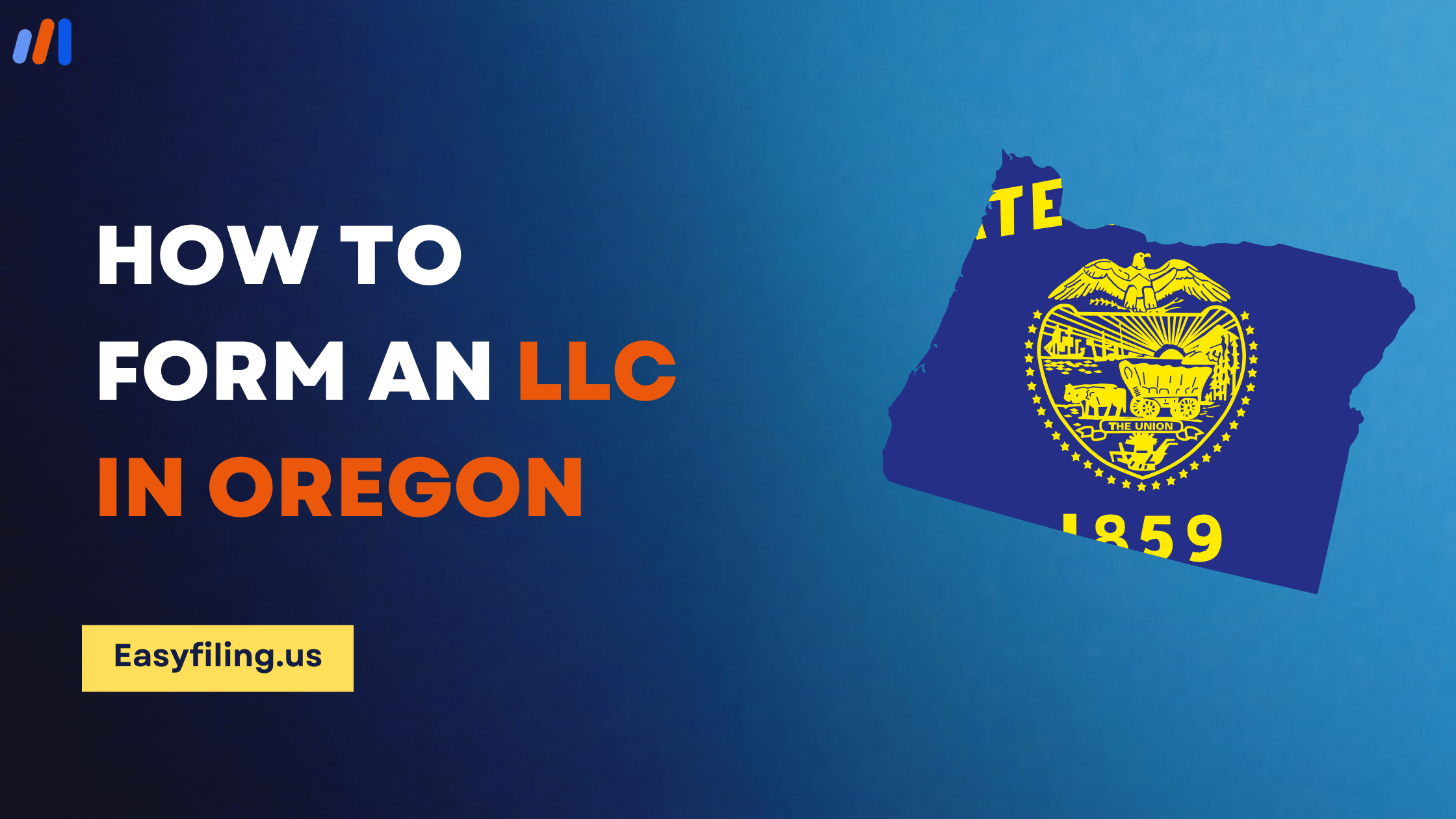Many factors need to be taken into consideration at the very beginning stages of a business. One of the most important decisions that every entrepreneur must make is to choose a business structure. In this regard, one of the most commonly used structures is the Sole Proprietorship or else, the S Corporation.
These two structures are quite different from one another and have their pros and cons. Their common characteristics differ in taxation, liability factors, and complexity of the operational process. That said, understanding the key differences between these two structures allows entrepreneurs to opt for the more suitable one for their particular business.
Moving on, it is important to acknowledge and consider the several similarities and differences between Sole Proprietorships and S Corporations to survive in the business market and choose the effective one considering the personal liability, tax effectiveness, or the growth of the business in the years to come.
Identifying the Key Differences: Sole Proprietorship vs S Corporation
Sole Proprietorship
The simplest of all business structures is called a sole proprietorship. It is owned and run by a single person. It is simple to set up as there is no formal registration needed except for obtaining local business licenses. Plus the owner is a single decision maker and a tax return filer.
Consequently, the sole proprietor can control and manage business processes in their entirety. An essential feature of a sole proprietorship is that an owner and a sole proprietor are the same people in law, so all liabilities and debts of the business are resolved by the owner personally.
However, the income resulting from the business activities is passed through to the owner’s income tax return forms. Thus, it makes it simple to prepare the taxes, but on the other hand, higher personal liabilities may arise from this single ownership.
S Corporation
On the other hand, an S Corporation also referred to as an S Corp is a more complicated type of business organization that limits the liability of its shareholders (owners) because those shareholders are normally insulated from business debts and the claims of legal judgments or suits.
To elect S Corp status, a business must first incorporate itself as a corporation C and then seek an S Corp status with the IRS. One of the key benefits of S-Corps is that they allow their owners to report S-Corp earnings and S-Corp losses on their tax filings avoiding the double taxation typically associated with C-Corps.
Additionally, S Corps offers certain tax advantages like paying the owner a reasonable salary and distributing the remaining profits as dividends which could be assessed a lower tax rate. S Corps, however, are required to meet some other formalities that C Corps do not have, such as the conduct of business meetings and the maintenance of records.
Why Should You Change from a Sole Proprietorship to an S Corporation?

There are many reasons why an owner will change their sole proprietorship to an S corporation especially when the business starts building and the owner wants to take full advantage of tax deductions, limits to liabilities, or enhance business perception. Here are some of the main benefits to consider when making the switch:
Advantages on Taxes
Pass-Through Taxation: Just like a sole proprietorship, an S Corporation does not bear the taxation of its business profits but rather the owner gets taxed at the personal level and all the business financials pass through the owner’s tax return. This helps the issue of double taxation that regular corporations (C Corporations) face.
Self-Employment Tax Savings: Sole proprietors will have to pay self-employment taxes (Social Security and Medicare) on all business profits. In an S Corporation, the only amount subject to self-employment taxes is the salary of the owners. The other profit after self-employment deduction which is distributed as dividends is free of tax. This can save a lot.
Limited Liability Protection
One of the main reasons to incorporate, even as an S Corporation, is the limited liability protection. Unlike a sole proprietorship, in which the owner’s assets may cover all debts and legal claims filed against the business, an owner’s assets are provided with protection in the case of an S Corporation.
Improved Credibility
Incorporation as an S Corporation is likely to enhance a business’s credibility to potential customers, suppliers, and investors. This could ease the way of establishing business contacts and getting finance since an S Corporation is considered larger than a sole proprietor.
Ability to Raise Capital
An S Corporation is entitled to raise a fund by issuing stock to many shareholders worldwide so it may have a limited number of shareholders (100). That flexibility may also be appropriate for business development.
Continued Existence (Perpetual Life)
A sole proprietorship comes to an end whenever its owner dies or closes the business but an S Corporation has perpetual life. After the exit of the population, which can be beneficial for future planning, the succession of business, or the sale of the business.
Possibility of Fringe Benefits
In the case of S Corporations, their fringe benefit offering is rather limited when compared to other larger corporations although certain benefits like health and/or retirement plans can be offered to employee-shareholders, including the owner. These benefits could be claimed as an expense by the business, which has the potential to decrease the taxable earnings of the business further.
Freedom in the Distribution of Profits
In the case of S Corporation, the distribution of profits to shareholders is not only to be based on the percentage of ownership interest, which means there is greater freedom as to how profits are to be distributed. This is however very useful in the process of designing the business in a manner that will suit the owner as well as other stakeholders.
Low Barriers to Ownership Change.
Changing ownership in a sole proprietorship needs asset disposals or transfers which are very technical, but in the case of S Corporation, this can be done by transferring shares to new owners and it becomes very easy to sell or hand over the business.
Eligibility Requirements for S Corporation Status
If you want your business to operate under S Corporation (S Corp) status in the United States, it must meet the following eligibility requirements:
Domestic Corporation: The business must be a domestic corporation, meaning it is created or organized in the US or under the laws of any US state.
Eligible Shareholders:
- Shareholders must be US citizens or resident aliens.
- Shareholders must be entities, estates, certain trusts, and individuals. Corporations, partnerships, or non-resident aliens cannot be shareholders.
- S Corps may only have 100 shareholders maximum.
One Class of Stock: The corporation can only issue one class of stock, however, differences in voting rights are allowed which means all shares must have the same rights in respect of distributions and proceeds of liquidation but not all shares must have the same voting rights.
Small Business Corporation: The business must be a small business, which typically means that it cannot be a financial institution, an insurance company, or a Domestic International Sales Corporation (DISC).
No More Than 100 Shareholders: As mentioned, the number of shareholders is limited to 100 or fewer. Also, certain members (including children, parents, and siblings) of a single household can be regarded as a single shareholder for this purpose.
Timely Election: A corporation that wishes to elect S Corp status must submit IRS Form 2553, “Election by a Small Business Corporation” no later than the 15th day of the 3rd month of the tax year for which the election is to be effective.
Steps to Convert a Sole Proprietorship to an S Corporation
Step 1: Determine Eligibility for S Corporation Status
Before you can elect S Corporation status, ensure that your business meets the eligibility criteria established by the IRS. These include:
- Domestic Corporation: The entity must be a corporation that was set up in the United States according to relevant state laws.
- Shareholder Limit: S Corporations may not have more than one hundred shareholders. eligible shareholders must include natural persons, estates, and certain qualified trusts. No partnerships or corporations can be shareholders.
- U.S. Citizens or Residents: The requirement for the shareholders is that they must either be US citizens or resident aliens. Nonresident aliens may not be shareholders of an S corporation in any circumstances.
- Single Class of Stock: The general rule is that one class of stock is issued by the corporation however variations in voting power in classes of stocks are possible.
So long as this sole proprietorship meets these requirements, it is now qualified for S Corporation election; so you may go ahead with the conversion process.
Step 2: Create a Corporation

The first stage in changing a sole proprietorship to an S Corporation is the establishment of a corporation. These are the steps involved:
Choose a Business Name: The name of the corporation has to be original as well as conform to the state’s naming guidelines. Scanning the Registry of Business Names in your Secretary of State is going to ensure the name is available.
Filing of Articles of Incorporation: As a requirement, the Articles of Incorporation or Certificate of Incorporation, which is usually the official term, must be submitted to the relevant state office (usually the Office of the Secretary of State) responsible for business incorporation. This form seeks to state the relevant information about the company including the company name and its address, as well as company directors.
Choose a Registered Agent: A registered agent is an individual or business organization that is appointed to receive court papers, notices, or demands from any legal process against the corporation. The agent can either be appointed or the business itself can be self-serving in this aspect.
Develop Bylaws: Bylaws are not normally required to be submitted if one is filing with the state, but they are basic instruments in giving structure to the internal workings of the corporation, like; decision-making processes, the election of shareholders and directors, and the conduct of meetings.
Apply for EIN: In the case you opened a sole proprietorship and did not have an EIN, you will have to apply for it with the IRS. For tax reporting and business account opening purposes, an EIN is necessary.
Step 3: Choose S Corporation Status
The next phase after the incorporation was done was the election of S Corporation status with the IRS. It will enable the corporation to be regarded as an S Corporation for taxation instead of a regular C Corporation.
File IRS Form 2553: File IRS Form 2553 (Election by a Small Business Corporation) Model Auto If you wish to choose the S Corporation Statutory taxation model. This document must be submitted to the IRS Office of the National, within 75 days from the date of the corporation’s incorporation. If it is missed, it may be the case that the election will be made in the subsequent tax year. Provided the tax year begins on 01 January, the filing should have been done on March 15 so that it becomes effective for that year.
Sign the Form 2553: The form has to be signed by all the shareholders. People need to agree on this because, without their consent, the election is not valid at all.
Get the Deadline to Submit the Application: The IRS Form 2553 must be filed to the IRS Department of Nation under Two months and 15 days for the Form 2553 to take effect for that particular tax year. It would be advisable to file the form well before this last date to avoid any disappointment in the S Corporations election once it is made.
Step 4: Turn over Assets and Liabilities to the Corporation
Once your corporation is established and has the S Corporation status, the next step would be to transfer the assets and liabilities of your sole proprietorship business into the newly formed company. Here’s how to handle this:
Transfer of Business Assets: This includes the transfer of tangible business assets such as office and plant machinery, inventory, vehicles, etc, and intangible business assets such as trademarks or copyrights. The transfer of assets should be formally documented to avoid disputes on ownership.
Transfer of Liabilities and Debts: All debts or liability obligations that are incurred under the sole proprietorship should be transferred to the new entity. This could range from loans, credit accounts, and contracts among others. This process should be addressed with your attorney or accountant.
Tax Consequences of the Transfer: The owner is required to understand the tax consequences that come with the transfer of business assets including the possibility of a capital gain tax. For instance, in instances where the transfer of property creates a gain, that gain must be indicated in the tax returns. It is important to remain in close contact with an accounting professional to make sure all the tax implications have been handled regarding the transfer of business assets into the corporation.
Step 5: Update Business Contracts and Licenses
Contracts and Agreements: Any contracts that were signed under your sole proprietorship will need to be updated or renegotiated under the new corporate structure. This includes business agreements with clients, suppliers, employees, and service providers. Notify all parties involved about the change in your business structure to ensure smooth transitions.
Business Permits and Licenses: Depending on your business type and location, you may need to apply for new licenses or permits under the corporation’s name. These could include local business licenses, state-specific permits, or industry-specific certifications. Check with local and state authorities to determine what’s needed.
Tax Registration Updates: Notify your state and local tax agencies of the change in business structure. If you’ve been operating as a sole proprietorship, you may have been filing taxes under your personal Social Security number. As an S Corporation, you’ll need to file separate tax returns and use the corporation’s EIN.
Step 6: Open a New Business Bank Account
Being an S Corporation, you need to practice segregation of personal and business accounts. Start a business bank account in the name of the new corporation and withdraw all business funds from the personal account that was a sole proprietorship to this new account. In so doing, it will be easier for you to prepare statements of accounts, which is useful for taxation and maintaining limited liability protection.
Salaries and wages: As one of the owners of the S Corporation, you will be required to commit yourself to a reasonable salary paid via payroll. It is a requirement of the IRS that any active owners of the S Corporation be compensated for their services. In that capacity, you have to establish a payroll and tax account on that basis.
Other corporate expenses: In addition, it may be advantageous to seek a business credit card or loan in the name of the new corporation. This will help to distinguish between personal credit and business credit and this is necessary in the establishment of the credit history of the corporation.
Step 7: Observe State and Federal laws
When your sole proprietorship has changed into an S corporation, it is also important to observe state and federal regulations as well:
Annual Reports are made and filed: In many states, corporations must file annual reports to stay in good standing. In some cases, such reports will bring changes in corporate officers, business activities, or some other essential particulars. Therefore, it is important to file them at the appropriate time so as not to be penalized, or the company will simply dissolve administratively.
Annual meeting of shareholders and directors: Under S Corporations requiring more than one shareholder, directors, and officers an annual general meeting of the shareholders and directors is also a requirement. Important, it does not matter how casual the meetings might be, as these must be recorded in the forms of the available minutes of any meeting for record and legal purposes.
IRS S Corporation Returns: From now on, S corporations must file Form 1120S (U.S. Income Tax Return for an S Corporation) with the IRS, as well as some state returns, where applicable. That tax return shows shareholders the income and losses of the S Corporation, which the shareholders would include in their tax returns. Please be guided by any federal and state filling terms as they exist.
Stay Informed on Corporate Governance: As an S Corporation, your business must adhere to certain legal conventions such as possession of up-to-date corporate files, issuance of share certificates, and record-keeping of significant resolutions.
Step 8: Seek Legal and Tax Advice
To transform a Sole Proprietorship into an S Corporation several procedures have to be followed which carry legal, tax, and or financial implications. You should seek assistance from a tax practitioner or a business lawyer throughout the exercise to observe legal and tax compliance. This will also be useful in minimizing the chances of making mistakes that might take a toll on the legal status of your firm or lead to unanticipated tax exposure.
Common Traps Navigating the S Corporation Status
There are several points of weakness when transforming your business into an S Corporation (S Corp) that can cause issues in the future. Common errors that need to be avoided during the transition are as follows:
Non-Compliance with the Eligibility Criteria
Mistake: Assuming that the business qualifies for an S Corporation status without checking its eligibility as stipulated by the IRS. These include being a domestic business, having a maximum of 100 shareholders, the shareholders comprising eligible individuals, certain types of trusts, and estates, and having only one stock type.
Solution: Make certain that your business, shareholder composition, and stock classification predict compliance with the S Corps provision before making the election.
Failing to file the applicable IRS form
Mistake: Not timely submitting Form 2553 to the IRS to elect S Corporation status. The form shall be submitted not later than 75 days from the start of the year of tax for which the elections are intended to be made.
Solution: Double-check that you file Form 2553 promptly to avoid delays or retroactive rejections.
Not Understanding Shareholder Employee’s Payments
Mistake: Earning owner-employees who are shareholders reasonable payments for their work. S Corporation shareholders who are employees are employed and hence the IRS requires them to earn a reasonable wage which is also subject to employment taxes.
Solution: Pay the shareholder-employees a salary equivalent to their work and the rate perceived in the industry to be able to avoid penalties to the IRS.
Failure to Amend Operating Agreement
Mistake: Most shareholders forget to amend their operating provisions or the corporate bylaws in as much as they relate to the classification of stock and rights of the shareholders in the character of an S Corp.
Solution: Amend your operating agreement or the bylaws to make them consistent with the transformation so that all shareholders adhere to S Corp requirements.
Misapplication of Corporate Losses and Distributions
Mistake: Poor corporate loss management or poor management of distributions. In S Corps, profits, losses, and credits are allocated to shareholders, however, they must declare their allocated portion of profit/loss, whether any money has been paid out or not.
Solution: It is crucial to be accurate in regards to shareholder basis correctly, especially when profits and losses are claimed, to avoid problems with the tax authorities.
How EasyFiling Can Help Convert Sole Proprietorship to S Corporation
Business proprietors can use EasyFiling to convert a Sole Proprietorship into an S Corporation. At first, Easyfiling helps readers understand the advantages of S Corporation status and then makes sure the required incorporation papers are filed, as well as IRS Form 2553.
They also assist with special requirements by the state and compliance in the future which enables them to keep their S Corporation status. EasyFiling also helps clients get tax professionals who will enable them to get tax benefits and provides registered agent and virtual address services.
Book a free consultation today and understand what is in it for you in this procedure.
File Your LLC Today
25$ off with a coupon
Lock in EasyFiling's transparent rates and get lifetime compliance support at no extra cost.
Get Started Now







